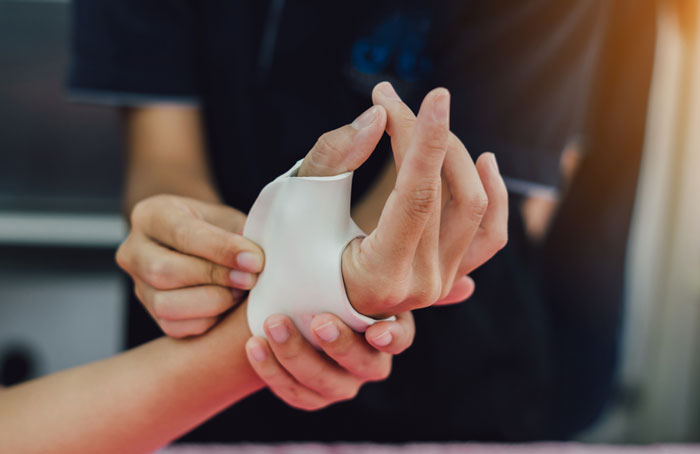
Wrist Sprains – not just a cop-out diagnosis
By Mason Neal - Physiotherapist
One of the most common things people think when they injure their wrist is that they’ve sprained it – and they’re more correct than they think. While there are several specific diagnoses for different types of wrist pain, a multitude are gathered in the diagnostic umbrella of the “wrist sprain” even through different mechanisms or structures could be at fault, and the timeline or interventions for recovery may vary.
The sprained wrist typically comes on from falling onto the palm of the hand, or other contact or jolting injuries that load the wrist more than normal. Wrist sprains may cause mild swelling around the wrist which can limit movement in any one or multiple directions of the wrist and increase sensations of tightness, pulling, or sharpness. With these injuries the main things your physiotherapist will assess to exclude are:
- Deformity to the radius or ulna (forearm) or the scaphoid or lunate (hand)
- Bruising to the palm of the hand when there was no direct trauma to the palm
- Excessive movement between the radius and ulna
- Excessive pain in the hand or wrist with gripping
- Tingling or changes in circulation to the hand or fingers

These symptoms can indicate more sinister injuries that may require imaging, like a broken bone or significantly injured ligament that impacts stability of the wrist bones and how the wrist can grip or function against heavier loads. Imaging may be useful if there is suspicion of these conditions, however rehabilitation can commence sensibly even without imaging, by means of casting or thermoplastic splinting depending on symptom location and severity. Casts and splints aim to restrict movement at the injured portion of the wrist, hand, or finger and are fabricated to minimise interference with the rest of the hand wherever possible, but in some cases they can feel cumbersome. Your physio will also discuss if the splint (despite being removable) can be taken off for certain activities and sleeping or if only taken off for hygiene and with certain conditions of hand placement while it is off.

For those less significant injuries, the “wrist sprain” presents in many forms, with symptoms often including many and sometimes all of the following:
- Mild swelling to part of the wrist, usually the non-palm surface
- Clicking with certain movements
- Pain with moving or being moved into certain positions
- Pain with sudden impact or jolting movements
- Weakness with gripping or use primarily attributed to pain
And this is where the cop-out nature of the wrist sprain arises. While there are many tests that we can perform in-clinic to differentiate between different structures being at fault leading to injury or symptoms, in many cases the treatment remains very similar for what is termed grade-I or grade-II injuries to ligaments and muscles that sit in proximity around the wrist, as well as if there is suspected bony bruising or other impact-related pain. The primary exceptions to the “wrist sprain” umbrella diagnosis are “ulnocarpal pain” and “TFC (triangular fibrocartilage) injuries” which arise from the pinky finger side of the wrist and have different interactions with the rest of the arm and different implications for hand and wrist function.
For the wrist sprain (and in some overlapping cases of ulnocarpal or TFC injuries), rehabilitation after assessment and diagnosis will often include:
- Soft tissue techniques including massage or dry needling in the case of muscle spasm or perceived tightness being involved
- Supportive or restrictive taping or other support for pain management
- Movement-based exercises to increase range of motion without pain increasing
- Strength-based exercises in various directions depending on the identified faults
- Co-ordination and control-based exercises to assist with wrist positioning under load
- Re-introduction to bigger activities and positions that were previously provocative
- Returning to full activities in a gradual manner as tolerated

And what comes with a broad diagnosis is unfortunately a broad timeline for recovery – some wrist sprains may return to full function within two-to-three weeks, while other instances may take eight-to-ten weeks or more. It is your physiotherapist’s job to determine what factors are contributing most to the pain and ensuring that tissue healing is happening as it should, and that the wrist isn’t being under-loaded (which stagnates progress) or over-loaded (which can aggravate symptoms).
If you have experienced a wrist sprain or are having difficulty returning to sport after a wrist injury that you can’t quite get on top of - or some other form of shoulder-to-hand pain - feel free to contact us or book online for an assessment today.